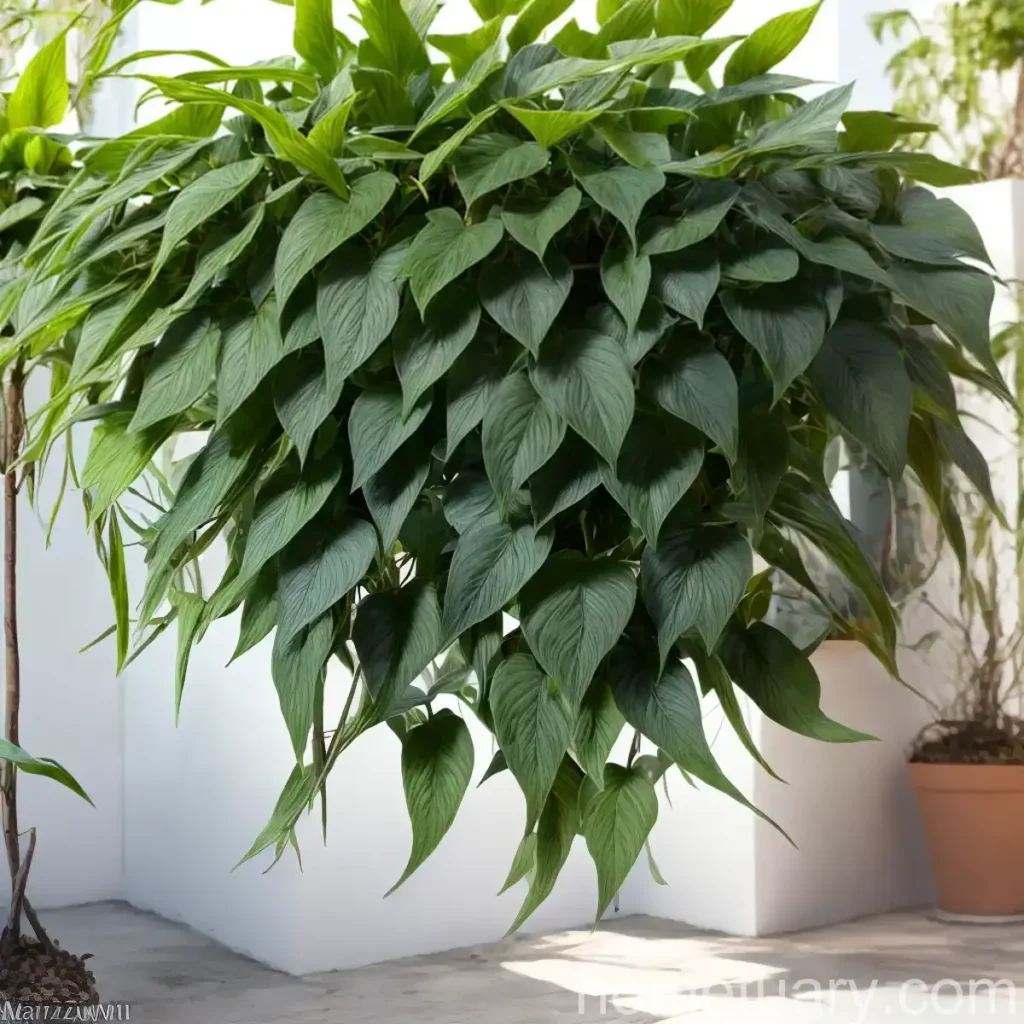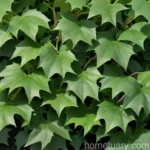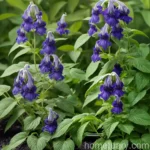All About Porcelain Vine (Ampelopsis brevipedunculata var. maximowiczii ‘Elegans’)
Introduction to Porcelain Vine
When it comes to introducing the porcelain vine (Ampelopsis brevipedunculata var. maximowiczii ‘Elegans’), one can’t help but marvel at the uniqueness and beauty this plant brings to the landscape. Also known as the variegated porcelain vine, it is a stunning ornamental vine that adds interest to any garden or landscape. This is a versatile and vigorous climber known for its distinct and delicate leaves that change color throughout the seasons, showcasing an array of green, white, pink, and purple hues.
The porcelain vine belongs to the Vitaceae family and is native to East Asia, including Japan, Korea, and China. The ‘Elegans’ cultivar specifically is prized for its aesthetic appeal and has gained popularity among gardeners and landscaping enthusiasts.
In this comprehensive guide, we will delve into the various aspects of porcelain vine care, cultivation, potential uses, and methods for ensuring its health and vitality. Whether you are a seasoned horticulturist, a novice gardener, or simply an admirer of plants, there will be something enlightening for everyone.
Key Takeaways – Porcelain Vine (Ampelopsis brevipedunculata var. maximowiczii ‘Elegans’)
Before diving into the intricacies of porcelain vine care and cultivation, let’s summarize the key takeaways for this fascinating plant:
-
The porcelain vine, scientifically known as Ampelopsis brevipedunculata var. maximowiczii ‘Elegans’, is a captivating, deciduous climbing vine valued for its variegated foliage and ornamental appeal.
-
This vine can be utilized for various landscape designs, including climbing arbors, trellises, pergolas, and fences, or as a ground cover for slopes and embankments.
-
When it comes to its culture, the porcelain vine thrives best in well-draining soil, and it requires regular watering to establish a healthy root system, especially during its initial growth stages.
-
Adequate sunlight is pivotal for the porcelain vine’s growth, and it is generally amenable to a range of light conditions, ideally receiving partial to full sun exposure.
-
Fertilizing the plant with a balanced and slow-release fertilizer in the spring can foster robust growth and promote the development of its striking foliage.
-
Pruning the porcelain vine is necessary to maintain its shape, control its spread, and encourage prolific flowering. Understanding the correct pruning techniques is fundamental to ensuring the health and aesthetic appeal of the plant.
-
Propagation of the porcelain vine can be achieved through stem cuttings or by collecting and planting its seeds. These methods allow for the expansion of its captivating presence within a garden or landscape.
Throughout this guide, we will explore each of these elements in detail, offering insights and tips on how to effectively cultivate and care for the porcelain vine, along with its potential uses and its interaction with the surrounding environment.
Porcelain Vine (Ampelopsis brevipedunculata var. maximowiczii ‘Elegans’)
Culture
The culture of the porcelain vine encompasses various aspects that contribute to its overall health and viability. Understanding its water requirements, sunlight preferences, soil conditions, and fertilization needs is fundamental to nurturing this captivating ornamental vine.
Uses
The porcelain vine, with its striking variegated foliage and climbing habit, offers an array of uses in different landscaping scenarios. Its versatility makes it an excellent choice for adding visual interest and character to various elements within a garden or landscape.
Water
Adequate watering is essential for establishing the porcelain vine and promoting its healthy growth. During its initial phase, regular watering is crucial to foster a robust root system and ensure its adaptation to the surrounding environment. Once established, the vine can exhibit a moderate tolerance to drought conditions, although consistent watering during prolonged dry spells is recommended to maintain its vitality and aesthetics.
Sunlight
The porcelain vine generally thrives in areas with ample sunlight exposure, ideally receiving partial to full sun. While it can tolerate varying light conditions, providing it with sufficient sunlight is pivotal for ensuring vibrant foliage and robust growth. In regions with intense heat, providing some shade during the hottest part of the day can prevent leaf scorch and maintain the plant’s overall health.
Fertilizer
Fertilizing the porcelain vine with a balanced and slow-release fertilizer in the spring is beneficial for stimulating its growth and enhancing the development of its variegated foliage. Selecting a fertilizer with adequate phosphorus content can promote prolific flowering and fruiting, contributing to an overall vigorous and aesthetically appealing plant.
Soil
The porcelain vine thrives in well-draining and fertile soil. Amending the soil with organic matter can enhance its fertility and promote favorable growing conditions for the vine. Ensuring good soil drainage is crucial to prevent waterlogging, which can lead to root rot and other detrimental effects on the plant’s health.
Pruning
Pruning the porcelain vine is integral to maintaining its shape, controlling its growth, and promoting its overall health and vigor. Understanding the appropriate pruning techniques and timing is crucial for ensuring the plant’s aesthetic appeal and long-term well-being.
Propagation
The propagation of the porcelain vine can be accomplished through various methods, including stem cuttings and seed collection. These techniques offer opportunities to expand the presence of this captivating plant within a garden or landscape, allowing for its propagation and cultivation in different areas.
Container Popularity
The porcelain vine’s popularity as a container plant stems from its ornamental and climbing attributes, making it a versatile and visually appealing addition to containers, hanging baskets, and other confined spaces. Its adaptability to container cultivation offers opportunities for incorporating it into diverse settings, catering to different landscape designs and preferences.
Container Common Diseases
While container cultivation offers several benefits for the porcelain vine, it is important to be mindful of potential diseases that can affect the plant’s health and vitality. Understanding common diseases and their prevention measures is essential for maintaining the well-being of the vine when grown in containers.
Disease Diagnosis
Diagnosing diseases affecting the porcelain vine involves identifying characteristic symptoms and signs associated with specific pathogens or environmental stressors. Understanding the diagnostic process enables timely intervention and the implementation of targeted measures to mitigate the impact of diseases on the plant’s health.
Common Pests
The porcelain vine, like many ornamental plants, can be susceptible to pest infestations. Recognizing common pests and their impact on the vine is crucial for implementing appropriate pest control strategies and preserving its health and visual appeal.
Botanist’s Tips
Incorporating expert insights and tips from botanists can provide valuable guidance for cultivating and caring for the porcelain vine. These tips encompass various aspects, including plant selection, maintenance practices, and pest and disease management, contributing to the successful cultivation and enjoyment of this captivating ornamental vine.
Fun Facts
Uncovering fun and intriguing facts about the porcelain vine adds depth to the understanding and appreciation of this remarkable plant. From historical significance to ecological interactions, these fun facts shed light on the diverse facets of the porcelain vine, enriching the experience of cultivating and admiring this captivating vine.
Links to External Resources
For further exploration and in-depth information about the porcelain vine, the following external resources provide valuable insights, guidance, and perspectives:
-
Royal Horticultural Society – Ampelopsis brevipedunculata var. maximowiczii ‘Elegans’
-
Missouri Botanical Garden – Ampelopsis brevipedunculata var. maximowiczii ‘Elegans’
-
University of Florida IFAS Extension – Ampelopsis brevipedunculata var. maximowiczii ‘Elegans’
-
North Carolina State University – Porcelain Vine (Ampelopsis brevipedunculata)
-
The American Gardener – Growing Porcelain Vine (Ampelopsis brevipedunculata)
Throughout this guide, we have explored various aspects of porcelain vine care and cultivation, offering comprehensive insights and practical tips for nurturing this captivating ornamental vine. By understanding its cultural requirements, potential uses, propagation methods, and interaction with the surrounding environment, one can embark on a rewarding journey of cultivating, admiring, and enjoying the beauty of the porcelain vine.















